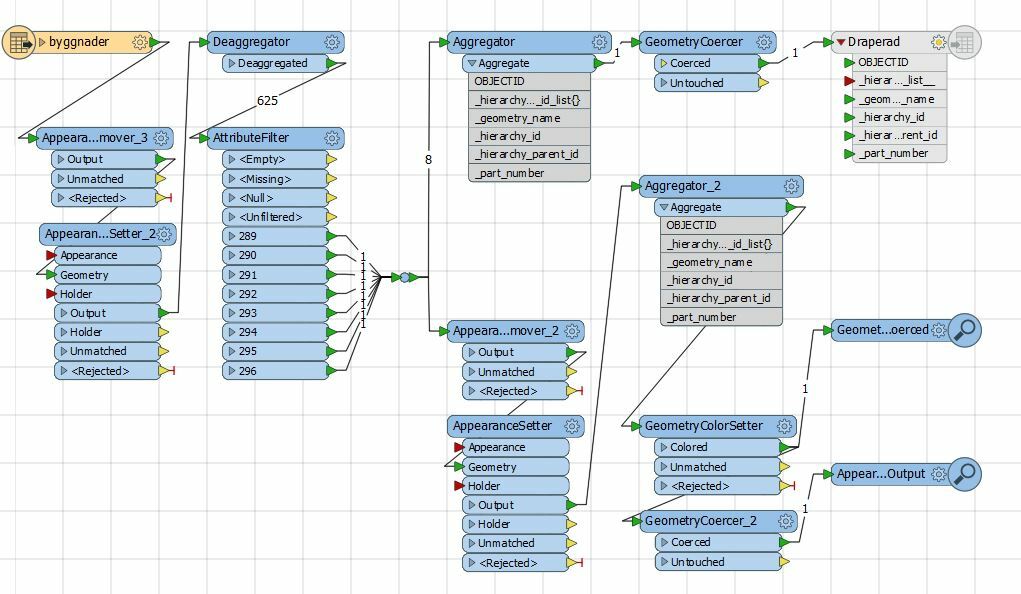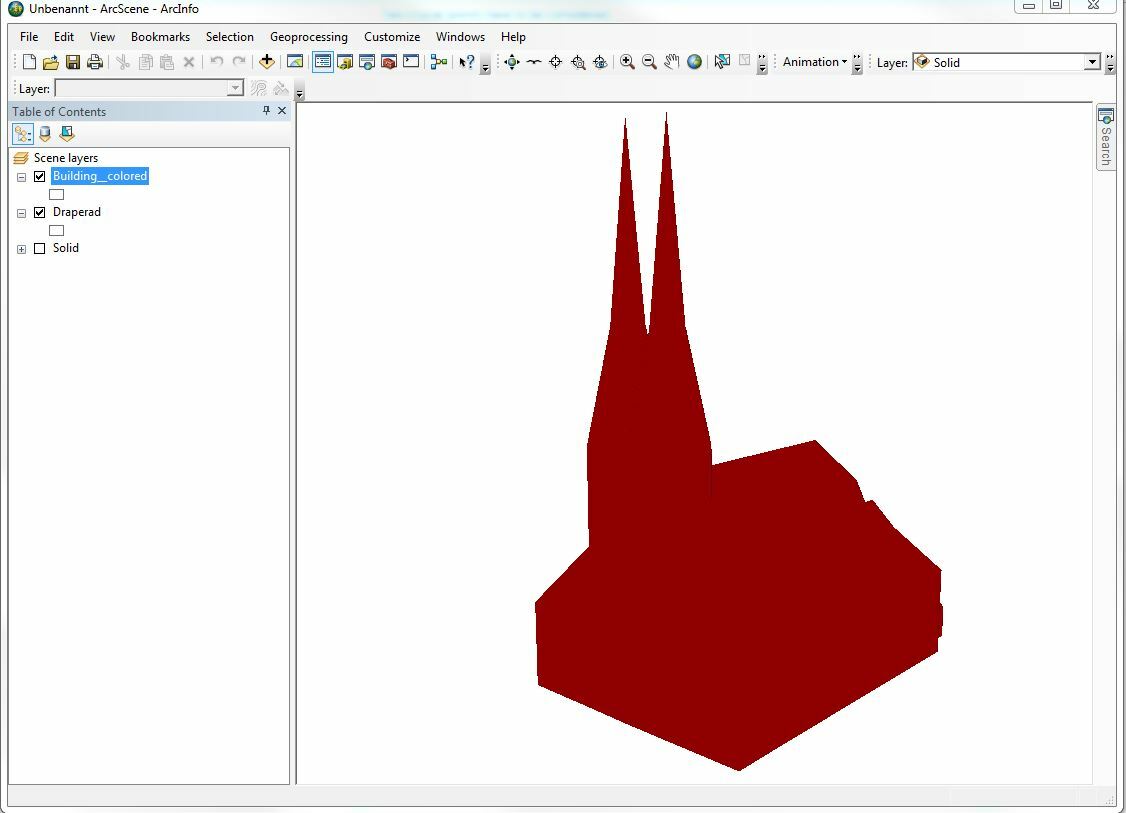Hi all,
This is the first time I put a question on this forum.
I have got this ESRI gdb feature class with multipatch objects containing aggregates of several buildings, all with realistic photo appearances draped on them. I need only one specific building and without its photo realistic appearance, but with a new solid color appearance.
I'm successful in deaggregating, selecting the one building of interest and saving that one building back to a new ESRI gdb, including its photo realistic appearance.
What I cannot manage is to remove this one building's draped photo appearance and creating a new solid color appearance. I tried AppearanceRemover on several levels to also remove any eventual inherited appearances. The removal works as the photo draping disappears, but the remaning building stays solid black no matter how I try assigning a new solid color appearance to it using the AppearanceSetter.
Hope someone can shed some light on this issue.
/ Hans










